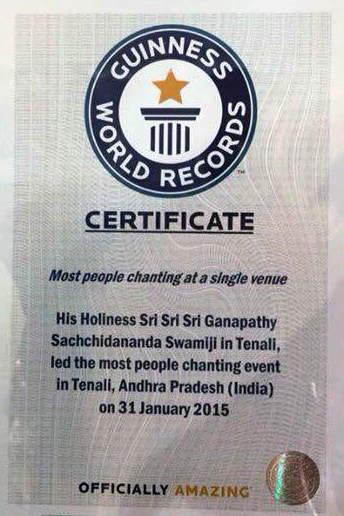Keshavāya namah
Rudra obediently abided by the dictates of his father. He created innumerable progeny who were akin to him in appearance, strength and ferocious nature. In no time his valourous children, the Rudra-ganas began to swallow the entire universes. Brahma was worried and frightened seeing this situation and resolved that this problem had to be solved without any delay.
Immediately he called Rudra and said, “O Supreme amongst Devatas! With fiery flames that emanate from their eyes, your children are burning everything contained in all directions of this universe, including me. Enough of this creation. Now bring it to an end.
Instead now you focus on penance which will cause well-being of all living entities. May good befall you! With the power of penance you will be able to create as before.
Tapasaiva paraṁ jyotir bhagavantam adhokṣajam
Sarva-bhūta-guhāvāsam añjasā vindate pumān
Srihari is that form of radiance which illumines everything. He is the inner witness who resides within the heart of every being. He cannot be found through any ascertained external proofs (pramāna). Only through penance the human being can experience Him as his inner Self (ātma). Now you undertake penance (tapas) seeking the well-being of all living entities”.
Rudra accepted the command of his father. He bowed at the feet of his father and went into the forest for penance. After Rudra’s departure Brahma began contemplating about continuing creation in accordance with the knowledge that he had obtained from Lord Srihari.
When he was thus contemplating about creation, 10 sons were born to him. They were Marichi, Atri, Angirasa, Pulastya, Pulaha, Kratu, Bhrigu, Vashishta, Daksha and Narada.
Narada was born from the lap of Brahma. Daksha was born from the thumb, Vashishta was born from the life-force (prāṇa), Bhrigu was born from Brahma’s skin, Kratu was born from his hand.
Pulaha was born from Brahma’s navel, Pulastya was born from his ear, Angirasa was born from the mouth, Atri was born from his eyes while Marichi was born from his mind.
Thereafter from Brahma’s right breast Dharma-prajāpati (lord of righteousness) was born. The Supreme Lord Narayana was born as the son of dharma. Adharma (unrighteousness) was born from Brahma’s back. From Adharma the God of death, who could cause tremendous fear to all worlds, emerged.
From Brahma’s heart lust and desires (kāma) were born. Anger was born from his eyebrows. Greed was born from his lower lip. Power of speech (vāk) was born from his face.
From his organs of reproduction, ocean was born. Nivriti (evil) was born from his anus. This Nivrtiti is the residence for sins.
From Brahma’s shadow was born Kardama Prajapati, the husband of pious Devahuti. This entire universe was born out of Brahma’s body and mind”.
Maitreya Maharishi further continued, “O Vidura! Brahma was totally infatuated with the beauty of Goddess Saraswati. However she did not have any such feelings towards him.
Marichi and other saints noticed that their father’s mind was tilting towards unrighteousness. With the confidence that he would adhere to their advice, they approached Brahma and said, “O Father! None amongst the Brahmas who existed in earlier creations has ever committed such a deed. None of the Brahmas who will exist in future creations will attempt such a deed.
Although you are supremely capable, you are unable to control your lustful feelings. You now have lustful desires towards your own daughter. How strange this is! You are the father of all the universes. You are the one who bestows knowledge. Seeking their well-being, people in the creation adhere to your footsteps always. Through this deed of yours, even though you are the noblest person you will have to face dishonor.
Tasmai namo bhagavate ya idaṁ svena rociṣā
Ātma-sthaṁ vyañjayām āsa sa dharmaṁ pātum arhati
The Lord has, through His power of intent, externally projected this universe which inherently exists within Him. To such Supreme Lord we offer our obeisance. He alone is capable of protecting dharma”.
Hearing these words uttered by his sons, Brahma was ashamed. He instantaneously gave up his body. That body which had developed association with unrighteousness (adharma), now merged into the 4 directions (dik). This transformed into fog, dew and darkness.
After some period of time once when Brahma was pondering about continuing creation in a proper procedure as before, the 4 Vedas emerged from his four faces. Not only this! The four priestly duties (ritwika-karma) viz., hota, adhvaryu, udhgāta and Brahma, elaborate methodologies for performance of the four sacrificial duties such as yagna (Vaidika karma), the four sub-branches of the Vedas (Upa-Vedas), the scripture on ethics and morals (niti-shastra), the four feet (sections) of dharma, the four stages of life viz., Brahmacharya, Grihasta, Vanaprastha and Sanyasa and their corresponding rules of righteousness also emerged”.
Vidura then questioned, “O tapo nidhi! O Supreme One! You have said that Brahma, the lord of all Prajapatis, created the 4 Vedas from his 4 faces. Which Veda emerged from which face? Kindly explain.”
Maitreya Maharishi replied, “From Brahma’s eastern face Rig-veda manifested. From his southern face Yajur veda was born. From the western face Sama veda and from his northern face Atharva veda manifested.
According to Vedic tradition, in a Yagna (sacrificial ritual) there are 4 priests viz., hota, adhvaryu, udgāta and Brahma. Each represents one Veda. Hota chants the hymns from the Rig-veda. These emerged from Brahma’s eastern face. Adhvaryu chants hymns from Yajur veda and follows the procedure laid in it. These emerged from Brahma’s southern face. Udgāta glorifies the Lord through Sāma veda which manifested from Brahma’s western face. The actual process of Yagna is overseen by the priest called Brahma. He also supervises the expiatory process for any mistakes. This knowledge emerged from Lord Brahma’s northern face.
Thereafter from Lord Brahma’s eastern face Ayurveda (knowledge of medicine) emerged. From His southern face Dhanurveda (knowledge of archery) emerged. From his western face Gandharva veda or knowledge of music manifested and from his northern face knowledge of architecture (shilpa Shastra) manifested”.
Nārāyaṇāya namah

